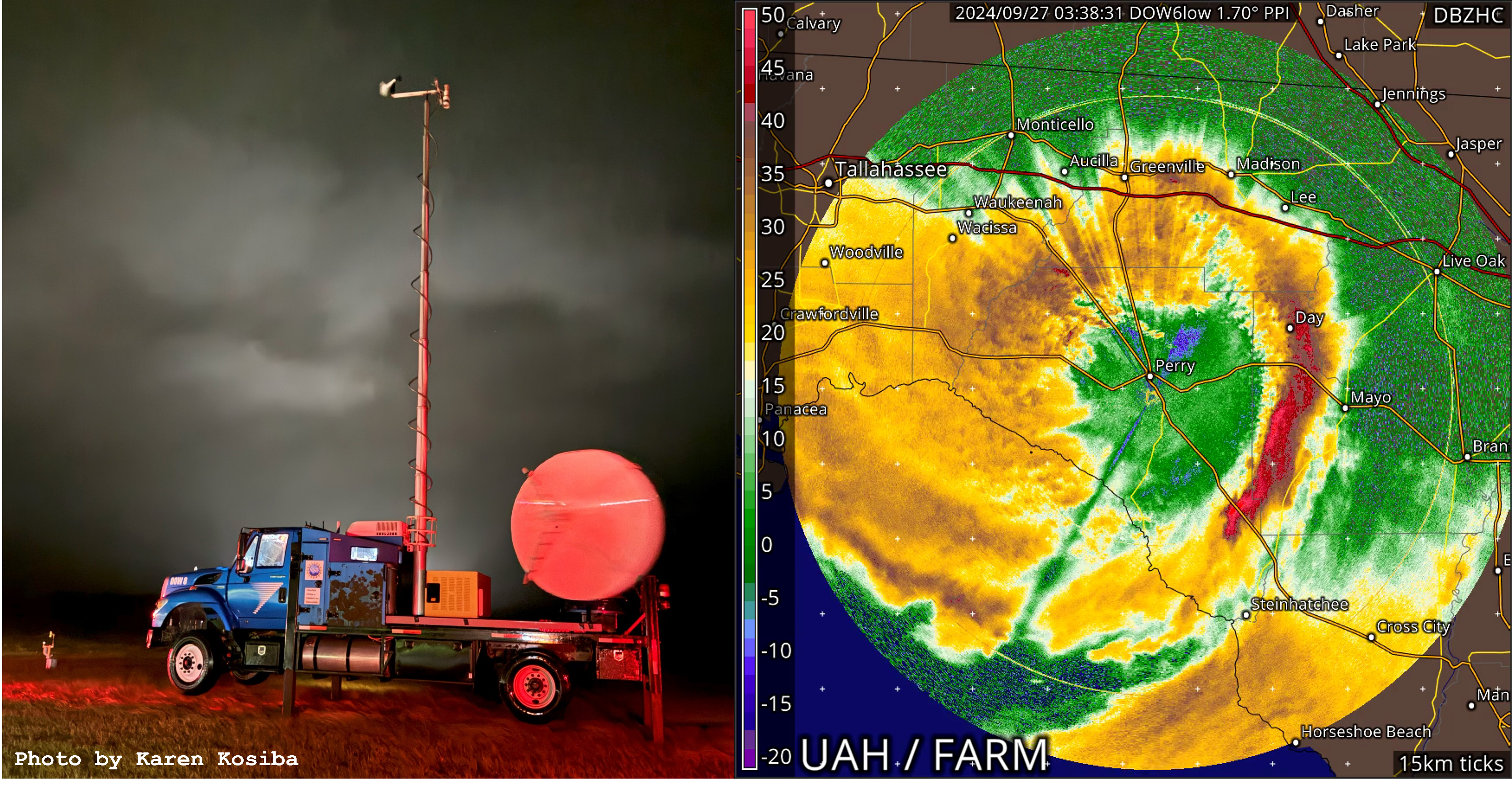


The Flexible Array of Radars and Mesonets (FARM) consists of the DOW radars, mobile mesonets, mobile upper air sounding systems, disdrometers, and ruggedized deployable instrumentation Pods in service to the scientific community.

BAMS Paper Describing FARM
FARM Updated Capabilities (including fully mobile mini-COW) - 2023 AMS Radar
FARM Future Capabilities (including S-band and Bistatic) - 2022 ERAD
Radar Specs
Instrument Specs
Request FARM Facilities
FARM Data (Citing & Downloading)
The University of Alabama Huntsville (UAH) Flexible Array of Radars and Mesonets (FARM) deployed two DOW mobile radars, a POLENET system, a Mobile Mesonet, and 7 Pods to the eye of Hurricane Helene late on 26 September 2024. DOW radars mapped the horizontal and vertical windfield structure of the eyewall and gusts, while the Pods, POLENET, and Mobile Mesonet measured near-surface winds (1-6 m AGL). Preliminary radar loops are available as we begin analysis of this important dataset.
DOW6 Pre-Eye GURU Movie
DOW6 In-Eye GURU Movie
DOW6 Pre-Eye GIF Loop
DOW6 In-Eye GIF Loop

2021: DOWs reveal that tornado winds average ~40 mph stronger than EF rating winds. EF ratings average 1.2 - 1.5 categories lower than DOW-determined wind speeds.
See PNAS 2021 paper (link)


FARM is engaged in research investigating tornadogenesis and structure as well as hurricane boundary layers and wind damage. The facility has also played a major role in dozens of major NSF research projects including RELAMPAGO, SNOWIE, PECAN, and VORTEX2. Click here for a list of publications in which DOW data have been used.

FARM is committed to community outreach as well as the advancement of radar meteorology education. Click here for a list of the educational projects in which the facility has been involved. Want the DOWs to show up at your school or community event? Click here to make a request.